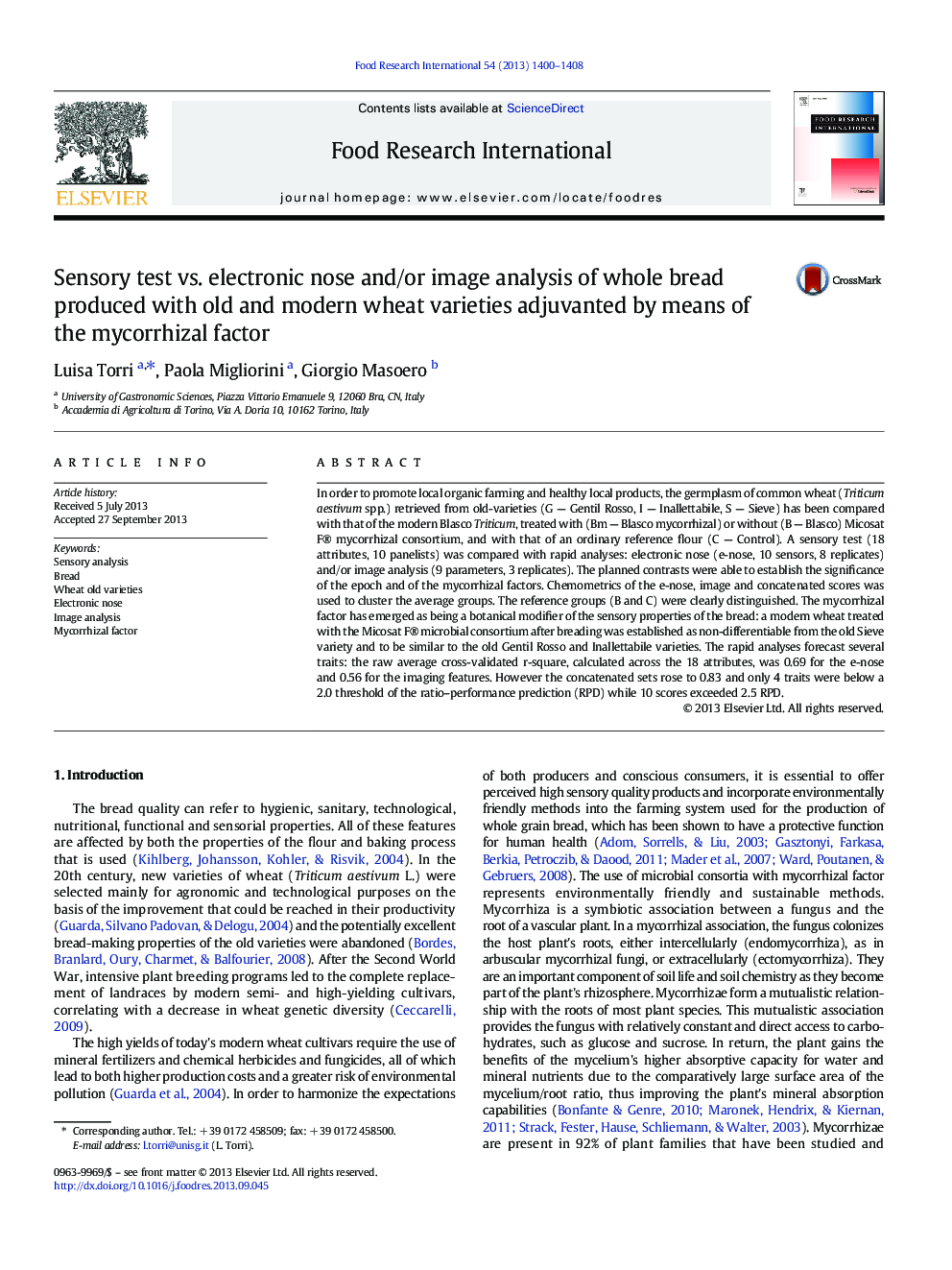| کد مقاله | کد نشریه | سال انتشار | مقاله انگلیسی | نسخه تمام متن |
|---|---|---|---|---|
| 6397310 | 1330675 | 2013 | 9 صفحه PDF | دانلود رایگان |
عنوان انگلیسی مقاله ISI
Sensory test vs. electronic nose and/or image analysis of whole bread produced with old and modern wheat varieties adjuvanted by means of the mycorrhizal factor
دانلود مقاله + سفارش ترجمه
دانلود مقاله ISI انگلیسی
رایگان برای ایرانیان
کلمات کلیدی
موضوعات مرتبط
علوم زیستی و بیوفناوری
علوم کشاورزی و بیولوژیک
دانش تغذیه
پیش نمایش صفحه اول مقاله

چکیده انگلیسی
In order to promote local organic farming and healthy local products, the germplasm of common wheat (Triticum aestivum spp.) retrieved from old-varieties (G - Gentil Rosso, I - Inallettabile, S - Sieve) has been compared with that of the modern Blasco Triticum, treated with (Bm - Blasco mycorrhizal) or without (B - Blasco) Micosat F® mycorrhizal consortium, and with that of an ordinary reference flour (C - Control). A sensory test (18 attributes, 10 panelists) was compared with rapid analyses: electronic nose (e-nose, 10 sensors, 8 replicates) and/or image analysis (9 parameters, 3 replicates). The planned contrasts were able to establish the significance of the epoch and of the mycorrhizal factors. Chemometrics of the e-nose, image and concatenated scores was used to cluster the average groups. The reference groups (B and C) were clearly distinguished. The mycorrhizal factor has emerged as being a botanical modifier of the sensory properties of the bread: a modern wheat treated with the Micosat F® microbial consortium after breading was established as non-differentiable from the old Sieve variety and to be similar to the old Gentil Rosso and Inallettabile varieties. The rapid analyses forecast several traits: the raw average cross-validated r-square, calculated across the 18 attributes, was 0.69 for the e-nose and 0.56 for the imaging features. However the concatenated sets rose to 0.83 and only 4 traits were below a 2.0 threshold of the ratio-performance prediction (RPD) while 10 scores exceeded 2.5 RPD.
ناشر
Database: Elsevier - ScienceDirect (ساینس دایرکت)
Journal: Food Research International - Volume 54, Issue 2, December 2013, Pages 1400-1408
Journal: Food Research International - Volume 54, Issue 2, December 2013, Pages 1400-1408
نویسندگان
Luisa Torri, Paola Migliorini, Giorgio Masoero,